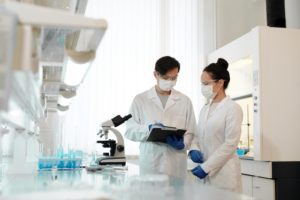Laboratory Process Optimization
A Guide to Streamlining and Improving Your Laboratory Workflow
As a laboratory professional, you know that optimizing your lab processes can make a significant impact on the efficiency and effectiveness of your laboratory operations. Whether you are looking to improve your laboratory’s overall workflow, streamline your sample processing, or reduce errors and discrepancies, lab process optimization can help you achieve your goals.

In this semi-comprehensive guide, we will cover the key steps and best practices for optimizing your lab processes, including:
- Understanding the importance of lab process optimization.
- Identifying bottlenecks and areas for improvement in your laboratory workflow.
- Implementing process changes and utilizing best practices to optimize your lab processes.
- Monitoring and tracking progress to ensure the sustainability of your optimization efforts.
Understanding the Importance of Lab Process Optimization
Lab process optimization is critical for a variety of reasons. Firstly, it helps to improve the accuracy and efficiency of your laboratory operations, which can result in faster turnaround times, better data quality, and reduced errors. Additionally, lab process optimization can help to reduce costs associated with laboratory operations, such as reducing the number of errors, reducing the amount of rework required, and improving the overall utilization of laboratory resources.

Moreover, lab process optimization is also important for maintaining regulatory compliance and ensuring the safety of laboratory personnel. By streamlining your laboratory operations, you can minimize the risk of errors, reduce the potential for contamination, and ensure that all laboratory procedures are performed in accordance with relevant regulations and industry standards.
Identifying Bottlenecks and Areas for Improvement in Your Laboratory Workflow
The first step in optimizing your lab processes is identifying bottlenecks and areas for improvement in your laboratory workflow. To do this, you will need to assess your laboratory operations from start to finish, including sample preparation, sample analysis, data processing, and report generation.
During this assessment, you should look for areas where your laboratory operations are slow, error-prone, or otherwise in need of improvement. This may include manual processes that are time-consuming or prone to errors, as well as areas where your laboratory is utilizing outdated or inefficient equipment or processes.

To help you identify bottlenecks and areas for improvement in your laboratory workflow, consider the following steps:
- Conduct a thorough review of your laboratory operations, including all processes and procedures, equipment, and personnel.
- Collect data on your laboratory operations, such as processing times, error rates, and equipment utilization.
- Analyze this data to identify areas for improvement, such as bottlenecks in your sample processing, areas where errors are occurring, and areas where equipment is being underutilized.
- Develop a plan for optimizing your laboratory operations, based on the findings of your assessment.
Implementing Process Changes and Utilizing Best Practices to Optimize Your Lab Processes
Once you have identified bottlenecks and areas for improvement in your laboratory workflow, you can begin to implement process changes and utilize best practices to optimize your lab processes. This may include:
- Automating manual processes, such as sample preparation and data processing
- Utilizing process control software and laboratory information management systems (LIMS) to streamline your laboratory operations.
- Improving equipment utilization through proper maintenance and calibration
- Reducing errors by implementing quality control and quality assurance procedures
- Training laboratory personnel on best practices and standard operating procedures (SOPs)

To ensure the success of your lab process optimization efforts, it is important to involve all relevant stakeholders, including laboratory personnel, management, and suppliers. By working together, you can actively identify any missed opportunities in optimizing workflows, while double-checking all the other processes for mistakes or calibration issues.
Monitoring and tracking progress to ensure the sustainability of your optimization efforts
Lastly, you need to set in place a system that will help track materials usage, consumables, and even solvents in the automation process. Successfully monitoring the process over time will lead to insights about automation ROI, scaling opportunities, and even if you can incorporate further automation to better optimize the processes.
In any laboratory project, the key has a well-thought-out plan ahead of taking any actions. Proper planning for automating any process can save both time and capital, ensuring fewer mistakes happen once the plan is implemented.
If you are considering adding automation to your laboratory workflows, LabServe Consulting Inc. can assist at any stage of the process. We have automation and applications experts, along with subject matter experts in the pharmaceutical and environmental fields.

